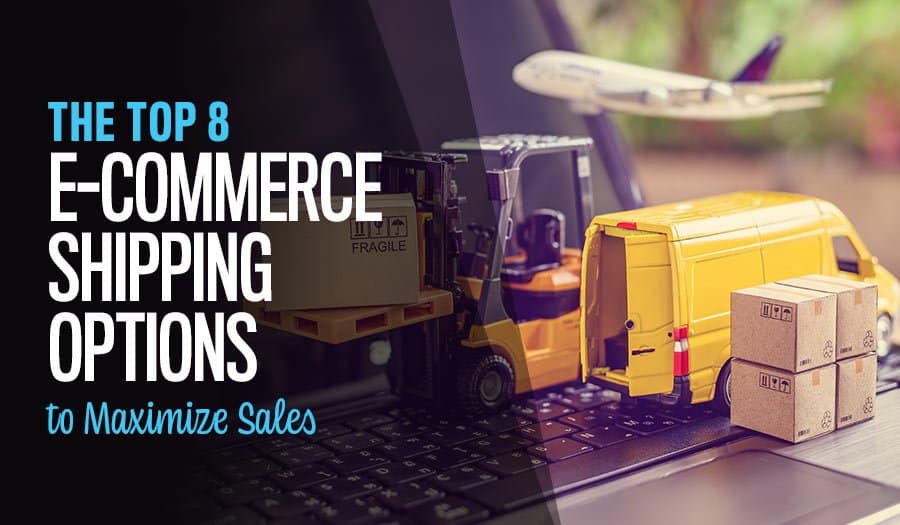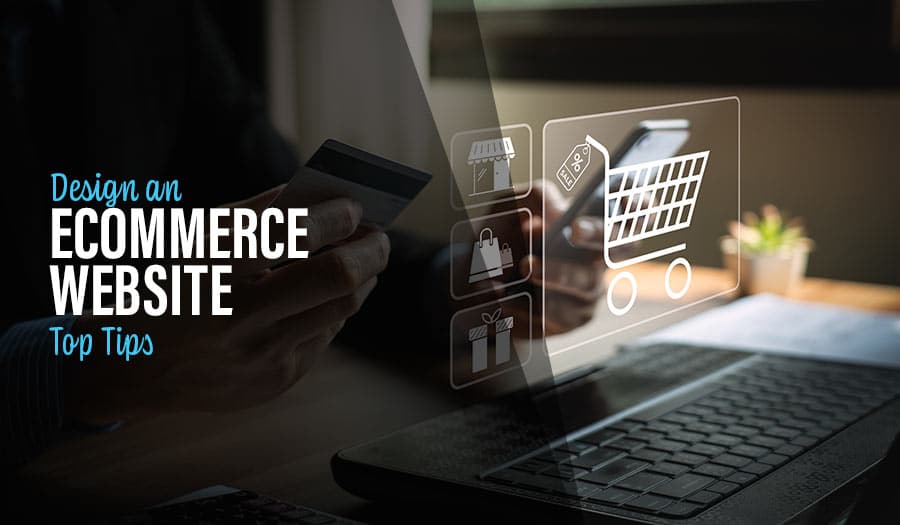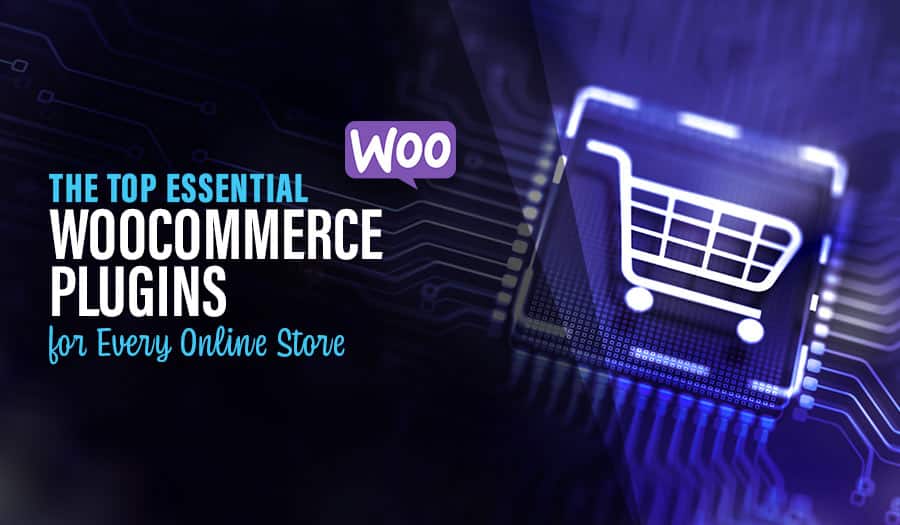Another month has passed, and you have yet to nail down an effective shipping strategy for your eCommerce site. You know that customers won’t stick around if your strategy is too complex to understand. You also know that shipping costs add up fast, so your business is bound to fail without a clear, well-defined shipping solution. Here are the Top E-Commerce Shipping Options to Maximise Sales & Reduce Complexity.
But you’re confused. There are tons of different shipping options to pick from—where should you start?
Thankfully, this guide will help clear things up. In it, you’ll learn why keeping shipping cost-effective and straightforward is a win-win for you and your customers. We’ll also let you in on some of the top shipping options to ramp up sales and minimize complexity.
So without further ado, let’s dive in.
Why Should You Keep Shipping Simple and Cost-effective?
It’s an all-too-familiar story.
A new customer enters your eCommerce store, finds a product they want at a price they like, and adds it to their basket. They click the “purchase” button, and then it happens: they see the shipping price on the checkout page and start questioning their buy.
An item they thought was fair-priced seems a little expensive all of a sudden. One of two things happens next:
- They abandon their purchase halfway and leave your store
- They decide to complete the purchase, despite the increased costs
More often than not, they’ll go with the first option. According to a recent Brilliance study, the number one reason for cart abandonment was unexpected shipping costs. Another survey by Baymard found that 49% of people abandon their baskets because of extra costs for shipping. Coincidence? We think not.
That means one thing: if you can make your shipping process cost-effective, you’ll have more customers getting across the finish line.
However, a cost-effective shipping strategy isn’t the only thing you need to supercharge your eCommerce business.
For starters, customers simply want what they want when they want it.
And sometimes, their expectations can be pretty high. Especially online.
You’ll deter customers who want their products fast if you have too many shipping options on your eCommerce site. As many as 87% of customers cite shipping speed as a crucial factor in determining whether they’ll shop with an eCommerce brand again.
That’s why you should offer fast, simple, and cost-effective shipping when you can. And it’s actually a win-win for both eCommerce store owners and customers.
You see, the more seamless the shipping experience, the happier the customer. This will ultimately pave the way for more repeat business and, of course, attract more sales!
Choosing the Right Shipping Solution for Your Business: 8 Best Options to Consider
As we said, shipping is often a “make or break” point of a customer’s purchasing journey.
If it’s inconvenient in some way, difficult to understand, or perhaps too costly, a potential customer would be more than happy to abandon their cart and find what they’re looking for elsewhere.
To avoid losing your customers over a mere shipping setting, we’ve compiled the following list containing eight of the top eCommerce shipping options today.
Top E-Commerce Shipping Options to Maximize Sales & Reduce Complexity
Top E-Commerce Shipping Options to Maximize Sales & Reduce Complexity
- Free Shipping
- Flat Rate Shipping
- Table Rates
- Weight-based Shipping
- Local Pickup
- Conditional/Complex/Customized Shipping Calculations
- Per Product Shipping
- Real-time Shipping Calculators
1. Free Shipping
As the name suggests, offering free shipping means that the shipping costs have been transferred to you.
It may not make sense at first, but offering free shipping could change your eCommerce store’s fortunes. Besides, a recent NFS report says that more and more customers want free shipping. Of the customers surveyed, 75% expect delivery to be free no matter the product’s pricing.
The big question is: how do you affordably offer free shipping? Here’s how:
- Market free shipping: Customers love free shipping, but you need to make them aware that it’s the one perk that distinguishes you from the park. Mention free shipping on every major page that gets customer visits, and include it on your product pages too.
- Factor free shipping into pricing and operation: You can include it in the cost of items.
You could also leverage long-standing relationships with your carrier. Remember, free shipping is a long-term play: don’t be afraid of incurring a small loss in the short term if it means a large payoff in the long haul.
Pros
- You’ll gain a competitive advantage
- Customers LOVE it
- Free shipping reduces cart abandonment rates
- It has the potential to increase cart size
- It helps you compete with High Street eCommerce shops
Cons
- Free shipping could affect your bottom line (just be careful not to end up like Pets.com)
- Shipping might be slower and lead to a worse customer experience (after all, you’ll have too many products in line waiting to be shipped).
- The worst drawback is that it will only make loyal customers shop from your site when you have free shipping.
2. Flat Rate Shipping
Flat rate shipping is where your customers pay a flat fee for every package they buy. You can also use a flat rate to create a per-item fee that doesn’t account for the product’s weight or add a free shipping option.
For example, you could charge $35 for orders under $200, then charge absolutely nothing for those over $200. You get the drill.
Pros
- Shipping isn’t technically free, but customers still perceive it as a discount. This could encourage customers to increase their cart size since shipping costs will remain the same, no matter the number or weight of items.
Cons
- Flat rate shipping can discourage small orders. If a customer wants a single item or a small amount, a flat rate can discourage a purchase if the fee is too high.
3. Table Rates
If you’d like to customize your prices based on location, as well as shipment size and weight, table rate shipping might be for you.
On a more granular level, a table rate shipping extension allows eCommerce stores to generate unlimited shipping methods based on the combination of the following items:
- Country: Set the destination of the shipping method, e.g., USA, Japan, and Canada.
- Region/State: Set the state inside a country such as Massachusetts, Washington DC, etc.
- ZIP Code/Postal Code
- Weight range: Set the weight limit for the specified shipping method
- Quality range: For instance, the item quantity of the order from 5 to 15 units
- Subtotal range: For instance, the subtotal of the order from $100 to $200
Besides, it makes no sense to ask customers located within Australia to pay just as much in shipping as those located halfway across the world.
Pros
- It is the most flexible shipping option out there—you get to define specific rates for specific scenarios.
- Table rate shipping also allows eCommerce store owners to create complex rules for shipping their products overseas.
Cons
- Some plugins (like the WooCommerce one) do not consider the product’s dimensions for calculating shipping rates.
4. Weight-based Shipping
As the name suggests, this shipping option entails setting shipping charges based on the total weight of all physical products in an order. It’s mostly viable in eCommerce stores where weight is critical, but all of your items are approximately the same size.
Pros
- You get to tweak pricing on a product’s actual weight. This could improve your bottom line down the road.
Cons
- This option doesn’t account for shipping distance as well as package volume dimensions.
5. Local Pickup
Did you know that you can skip the shipping process entirely?
With the local pickup option, your customers pick up their packages from you in person.
However, for this option to work without hiccups, you’ll have to accompany the order with specific instructions like location and collection time.
Once you confirm their order is ready for collection, your customers will get an automatic pickup notification email with the details you’ve included.
Pros
- It’s cost-effective—you’ll never have to raise your prices to accommodate shipping costs (which your customers will absolutely love!)
- It’s convenient—customers can pick up their orders when it fits their schedule. It also works for heavier items that need to be picked up by a car.
- It’s personal—sometimes, all your customers need is that human touch to push them over the line.
Cons
- If the bulk of your customers is from overseas, then this option wouldn’t work for you.
- The meaning of convenience varies from one customer to another. Some customers deem door-to-door delivery as the ultimate form of convenience.
6. Conditional/Complex/Customized Shipping Calculations
Expanding your business to additional countries is a brilliant idea. But it can be tricky if you sell licensed products that aren’t available in all parts of the world or simply want to avoid the hassle of shipping some of your products overseas.
Limiting your shipping options is the way to go if your store’s products have multiple conditions.
At its core, conditional or customized shipping allows you to restrict products based on a customer’s location. You can also use this option to prevent customers from ordering items that would be too expensive to ship.
Pros
- It’s cost-effective—you only ship those products that positively impact your ROI.
Cons
- You’ll miss out on a potentially huge overseas market
7. Per Product Shipping
Think about it.
When charging equal shipping rates for all items, you may end up calculating the shipping charges wrongly, right?
This is where per-product shipping comes in handy.
This shipping option allows eCommerce store owners to define different shipping costs for individual products based on a variety of factors (e.g. customer’s location, product’s dimensions, etc.).
You can implement this solution in two ways:
- Standalone method: Here, the “per product shipping” is the standard shipping method. That means all product costs are combined to form a single rate.
- Multiple shipping methods: Costs can be applied in addition to your shipping methods. For instance, if your online store offered a bulky item that you wanted to set up with additional shipping charges, you could create a one-off fee for that particular item. If you had multiple items in your store, two kinds of shipping would be represented in one cost—(a) the shipping cost of the bulky item and (b) your default shipping costs for the other items in the store.
Pros
- You get to avoid the all-too-common trap of charging equal rates for all outgoing products, regardless of their dimensions. This will ultimately save you a few coins on the dollar.
Cons
- This method doesn’t account for shipping distance
8. Real-time Shipping Calculators
Real-time shipping calculators, also known as live rates, allow you to offer shipping rates at the carrier’s exact cost for various weights, sizes, and distances.
In short, you translate the shipping costs to the carrier.
True to its name, this option allows your rates to sync with the carrier’s rates in real-time. So if your carrier increases their rates by 10%, the shipping costs on your website will also reflect this change.
In Australia, an example is the Australian Post calculator.
Pros
- Since customers pay the exact shipping amount they see on your site, it increases the trust they have in your brand.
- This option removes unpleasant surprises and helps customers make more informed purchasing decisions.
- Most customers will be willing to pay for lower-cost shipping methods, which eliminates the need for you to offer free shipping.
Cons
- Some customers use this option to discover just how many products they can buy before the shipping fees become higher than they want to pay and regularly remove or add items for their order to reach a “sweet spot.” This can translate to higher sales of lighter or smaller products, and as you well know, “lighter and smaller” doesn’t always mean higher ROI.
Final Thoughts
The key for shipping success is coming up with a strategy that’s simplest to deliver and easiest to understand from a customer’s point of view—even if it means combining several strategies together. And don’t be afraid to test out different strategies until you get it right! There you have it, our complete guide on the top eCommerce shipping options.
Need a hand with your upcoming website project? PixelFish can help. Our sole mission is to help our clients reach the next level of online success! Feel free to reach out to our web agency Sydney team today to get started.
Take your online store business to the next level with a Pixel Fish Ecommerce Website.
Check out some of our latest Ecommerce Website Design projects.
Further Reading
10 WordPress Plugins to Speed Up Your Ecommerce Website
Top 3 Ecommerce Customer Service Tactics for your Website
9 Reasons to Use WordPress for Your E-Commerce Website
How to Choose the Best Ecommerce Shipping Options for Your Website
Pros and Cons of Using Drop Shipping for Ecommerce
How to Create the Perfect WooCommerce Website
Why a Single Page Website Could Be the Perfect Launch Pad for Your Small Startup Business
6 Tips to Increase Your Ecommerce Conversion Rate



